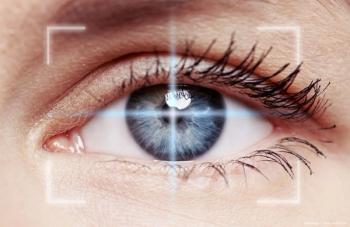
Evolution in wavefront-guided treatment yielding improved outcomes
A number of incremental advances that have occurred in wavefront-guided treatment during the past year have added up to significantly enhanced outcomes of these customized procedures, said Capt. Steven C. Schallhorn, MD, director, cornea and refractive surgery, Naval Medical Center, San Diego.
Chicago-A number of incremental advances that have occurred in wavefront-guided treatment during the past year have added up to significantly enhanced outcomes of these customized procedures, said Capt. Steven C. Schallhorn, MD, director, cornea and refractive surgery, Naval Medical Center, San Diego.
These recent developments include faster treatment times that lessen corneal hydration variability and enable better patient fixation; new technology for registration and pupil centroid shift compensation that improve the precision of ablation alignment; improved pulse fidelity; and refined algorithms. In addition, there are benefits available with the use of the femtosecond laser microkeratome for flap creation.
Dr. Schallhorn used data from various studies to illustrate how the various factors have had a positive impact on outcomes. As a final example, he reported data from two groups of patients undergoing wavefront-guided LASIK or wavefront-guided PRK to demonstrate the overall excellent results now achievable with wavefront-guided procedures. Predictability was excellent-in both of the study groups the standard deviation of the refractive error was only about 0.3 D, 90% of eyes had an achieved SE within 0.5 D of intended, and two-thirds were corrected to within 0.25 D of intended. A graph plotting curves of postoperative uncorrected visual acuity (UCVA) minus preoperative best spectacle-corrected visual acuity (BSCVA) showed the distribution was around no change.
“The technology that is available to us now has reduced the variability of refractive outcomes and yields in the average patient, a postop UCVA that is the same as the preop BSCVA. Such results are significantly better than what we were achieving a year ago. However, in the future we can look forward to even better outcomes as progress may be made in aberrometer ergonomics, ablation algorithms, dynamic cyclotorsional tracking, ablation microenvironment control, and even with the development of customized treatments based on individual corneal biomechanics,” Dr. Schallhorn said.
Newsletter
Don’t miss out—get Ophthalmology Times updates on the latest clinical advancements and expert interviews, straight to your inbox.
















































.png)


